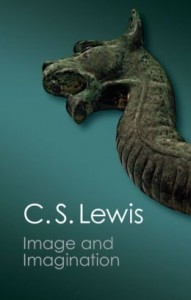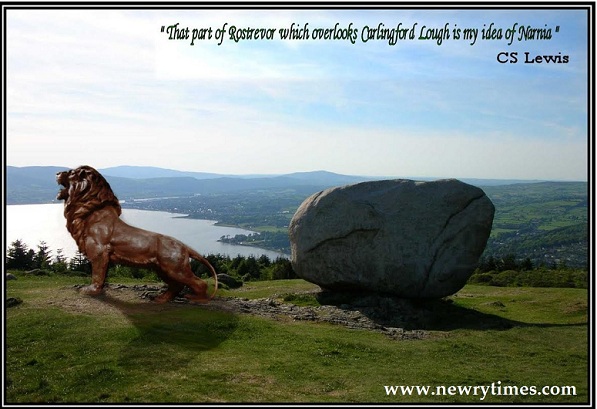 We’re very excited about a new book full of the writings of C.S. Lewis. Some of them have never been read by those that have studied the works of C.S. Lewis for many years. Until now, they may have even thought they owned every available piece of C.S. Lewis’ writing. Here we have an excerpt from the essay, which the book takes its’ name from: Image and Imagination (available in paperback and for Amazon Kindle).
We’re very excited about a new book full of the writings of C.S. Lewis. Some of them have never been read by those that have studied the works of C.S. Lewis for many years. Until now, they may have even thought they owned every available piece of C.S. Lewis’ writing. Here we have an excerpt from the essay, which the book takes its’ name from: Image and Imagination (available in paperback and for Amazon Kindle).
This new publication from Cambridge University Press, meant to coincide with the 50th anniversary of the death of C.S. Lewis (22 November), is a collection of criticism and reviews by Lewis. This essay was rescued from a fire at the Lewis family home, written in a ruled school notebook. It was possibly intended for publication by T.S. Eliot in the Criterion. It is an extraordinary rumination on the relationship between art and truth, literature and the imagination.
What we do when we imagine is to suppose a reshuffling of universals taken from the actual world. When we imagine Britomart we take our idea of “a girl”, which is part of our general knowledge, and our idea of “medieval knight”, which is another part of our general knowledge, and put them together. To get into imagination itself what we mean by either of the two terms is impossible. They are not imaginations: they are summarised knowledge of the real. Always the real world is the bank on which the poet draws his cheques; and though a metaphysical lyric may be a fine and private place, all the meanings embraced within it are but passengers who come there from the public, eternal, objective world of reality and haste thither again.
Aristotle was right. Poetry presents οια αν γενοιτο, things that might be – it recombines elements which belong to the real, and to appreciate poetry involves at every moment a knowledge of those elements and therefore of the real.
What obscures this truth is the fact that we may find fairies as well as towers in our story. If all literature were realistic the doctrine which isolates “art” from human experience as a whole would not be even plausible. The sort of monadism which I am rejecting may be regarded as one of the many attempts to explain the marvellous in literature: parallel to the allegorisations with which our ancestors excused their pleasure in Ovid, and equally shallow. In fact, the wildest passages of Italian or Indian epic conform to Aristotle’s definition as easily as one of Thackeray’s novels. Let us try the experiment. Disturb the realism of Roland’s dark tower a little. As Roland approaches, let the bells within the tower begin to ring. But instead of sounds let them give forth great birds: and yet we understand somehow that the birds are the sounds. This seems a far cry from the real world. Yet even these birds affect us only because of their hypothetical connection with reality.
For example, “bats” would have a different poetical value from birds. Yet the images will scarcely be distinguishable: and neither their bat nature or their bird nature will be explicitly imagined. It is enough to give them the one or the other name and they will affect us accordingly: and this because we know what bats and birds are in the real world, and therefore what these would be in the real world.
And however we vary the fantasy we shall find the same result. Let these bell-born birds be no common birds but the souls of dead men whose blood was used to temper the bells: and let them fly out singing with human voice Justorum animae.
Does anyone suppose that the imaginative value of such fantasies can be divided for a moment from our knowledge of death, and blood, and Christianity? You may say, indeed, that it is not our crystallised knowledge of these things that counts, but the emotions which have gathered about their names. But it is easy to answer that where a reader depends merely on the associations roused by the words, he will be right only by accident: as many a young reader has found to his cost.
Good reading implies, and good writing demands of its readers, that the emotion should depend not on the name alone, but on the name understood. The name, indeed, rouses emotion, but rouses it through the memory of the thing; that is, through knowledge. And we have seen that no degree of unrealism in the imagination impairs this principle a whit. We can cut the bells off from the sound which they would really have and substitute birds; but then the quality of such a marvel depends on our having expected sounds, and we expected them because of our knowledge of real bell-hood. The birds again affect us by their hypothetical connection with real zoology: cut this off, and the whole process is repeated with the dead men. In other words, we can sever any number, one by one, of those connections which our imagined objects would have in reality, but for every one we sever we set up a new one. The monadist is fighting with a hydra. If A were real it would imply B. We can remove B and substitute C which A could not have in reality. But if C is to have any poetic significance for us, then C in its turn will be determined by its hypothetical connection with the real: C will imply D. You can change D if you choose, and D again will have meaning for us in virtue of its hypothetical E. Remove E and it will be the same again. You must stop somewhere: and wherever you stop you will find reality waiting for you. You may change, as much as you please, the character which your objects would have in reality: but reality furnishes both that which is changed and that by which you change it.
• Image and Imagination: Essays and Reviews by CS Lewis, edited by Walter Hooper, is published by Cambridge University Press, is available in paperback and for Amazon Kindle.




This final paragraph with its ABCDE’s seems to be wandering off into Arthur Benjamin territory. I am sorry to mention this but for me this article might as well have been written in Chinese.
Just in case I am not the last person to know about this: on 27 November 2013 the BBC4 U.K. broadcasting channel showed a documentary with the following programme information – ‘Narnia’s Lost Poet: The Secret Lives and Loves of C S Lewis. Biographer A N Wilson goes in search of the man behind Narnia, a highly sensitive man whose personal life was marked by the loss of the three women he most loved.’ This 1 hour long documentary contains lots of useful information about the life of C S Lewis. It features interviews with people who knew C S Lewis personally: the actor Robert Hardy; the actress Jill Raymond who was one of the many child evacuees who passed through The Kilns during WW2; his stepson Douglas Gresham. It also features a brief segment of audio tape of C S Lewis describing himself as a dinosaur in a modern world. A N Wilson also mention at the end of this documentary that the burial of C S Lewis was almost a secret burial. Watch this documentary for yourself to find out why.